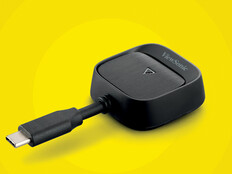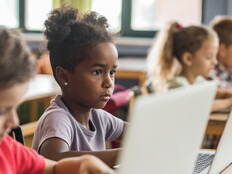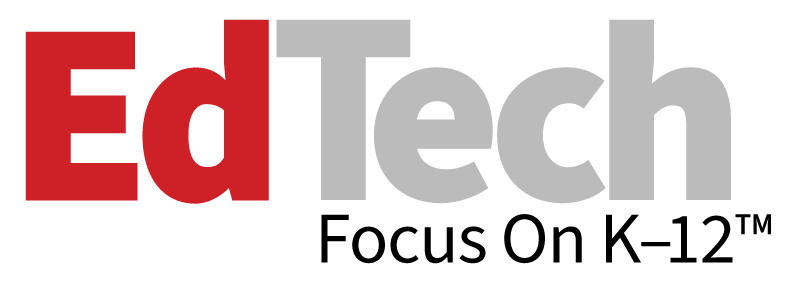EDTECH: What does the makerspace look like in your school?
HANESKI: The beauty of a makerspace is that it can be as low-tech as crocheting and DIY up to high-tech robotics. We have soft seating and some high-top tables with chairs and cabinets that open up to store the things you need. I have three tables that you can fit five stools around, and on the end of each is a large Promethean board. The collaborative tables are U-shaped, so picture putting YouTube or a digital magazine on the Promethean board to help you work through a project. Then, the other side of the Promethean board is a whiteboard.
KREINESS: We are in the process of setting up a makerspace, but we do have a 3D printing club with a handful of students. They have two 3D printers in a classroom, and I helped the school order an additional 3D printer that is housed in our library media center.
Our middle school is part of a grant program with Heart of America, which works in conjunction with Arizona State University to design and renovate a space in the school to become an innovation lab. Last year was the first year the innovation lab was open to students.
BONGIORNO: I was chosen to open up a new STEM magnet school in Atlanta, Ga., and we built our three-floor library along with students from the ground up, including different makerspace areas. We have a prototyping makerspace; a podcast studio; and a little art area with painting stations, sewing machines, a Glowforge and other 3D printers.
DIVE DEEPER: Flexible furniture creates more opportunities for collaboration.
STUMPENHORST: I have 3D printers, which are running 24/7. We have esports with Nintendo Switches and Raspberry Pi devices. We have robots, we have Legos, we have soldering irons, we have button makers, we have a laser cutter, we have a CNC machine, I have a cart that’s just craft materials. We also do jewelry repair, which has become, oddly, a rather steady industry for us. The space is always messy, which is a good thing.
EDTECH: How do you decide what projects or technologies to include in your spaces?
BONGIORNO: We visited several local, Atlanta-area makerspaces to see what worked for them and then adapted that for our own needs. It was a learning opportunity for everybody to develop a program that worked for us, with no preconceived notions. We also let students lead projects because libraries are spaces for communities, for students to feel seen and heard and valued. At the end of the day, it’s getting their input that’s going to do that, whether it’s through a makerspace or a book club.
STUMPENHORST: Pretty much everything we have in our space is because a kid came to me and said, “Hey, can we do this?” Three years ago, it was all about 3D printing. Now, it’s video games. Last year, it was Rubik’s Cubes.
HANESKI: I have a makerspace club with kids that meets twice a month, and I ask them to come up with ideas that the other kids would like. Even though it’s something I could do, I empower the kids to do it. You don’t have to be the expert, especially if you’re in a high school, because the kids can embrace it. If you’re in an elementary or middle school and you can’t do it yourself, or the kids can’t, then get a parent volunteer.
KREINESS: A lot of the 3D printing we’ve done is around incentives for students, either allowing students to design and print models as an incentive for behavior or attendance, or having the teachers print things to give to the students, like tokens, tickets and rewards.
EXPLORE: Which 3D printer is right for your K–12 makerspace?
EDTECH: How does this space promote student well-being and the building of life skills?
STUMPENHORST: School sucks for a lot of kids. We have these kids that don’t fit in traditional boxes, so I created my schedule to provide opportunities for kids to come to the library. Schools always obsess over reading and math scores, but in the library, there are no grades, there’s no assessment, there’s no judgment. We have a fair number of kids that say the library is their safe space.
With kids this age, identity is a big thing, so with esports and video gaming, for example, some kids have to learn to lose and be bad at something. That’s not a junior high skill; that’s a skill I hope will stick with them throughout their lives.
KREINESS: It’s not enough to have cool, emerging technologies without really understanding how they fit into education and educating the whole child. Take small steps to infuse design thinking and growth mindset skills into the culture at your school. If you establish that first, by the time you get to 3D printing, learning the technical stuff will probably frustrate students less. Instead, it teaches them about learning from their mistakes, persevering through their mistakes and being able to tackle it again.












